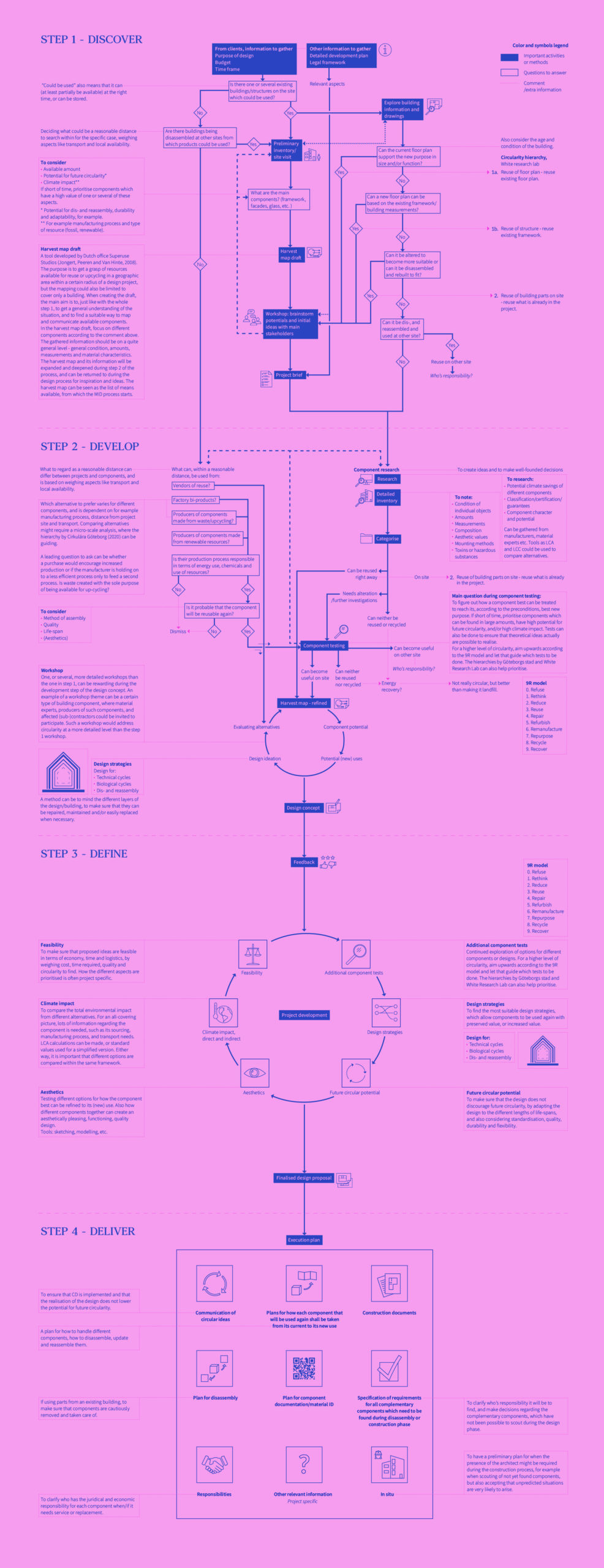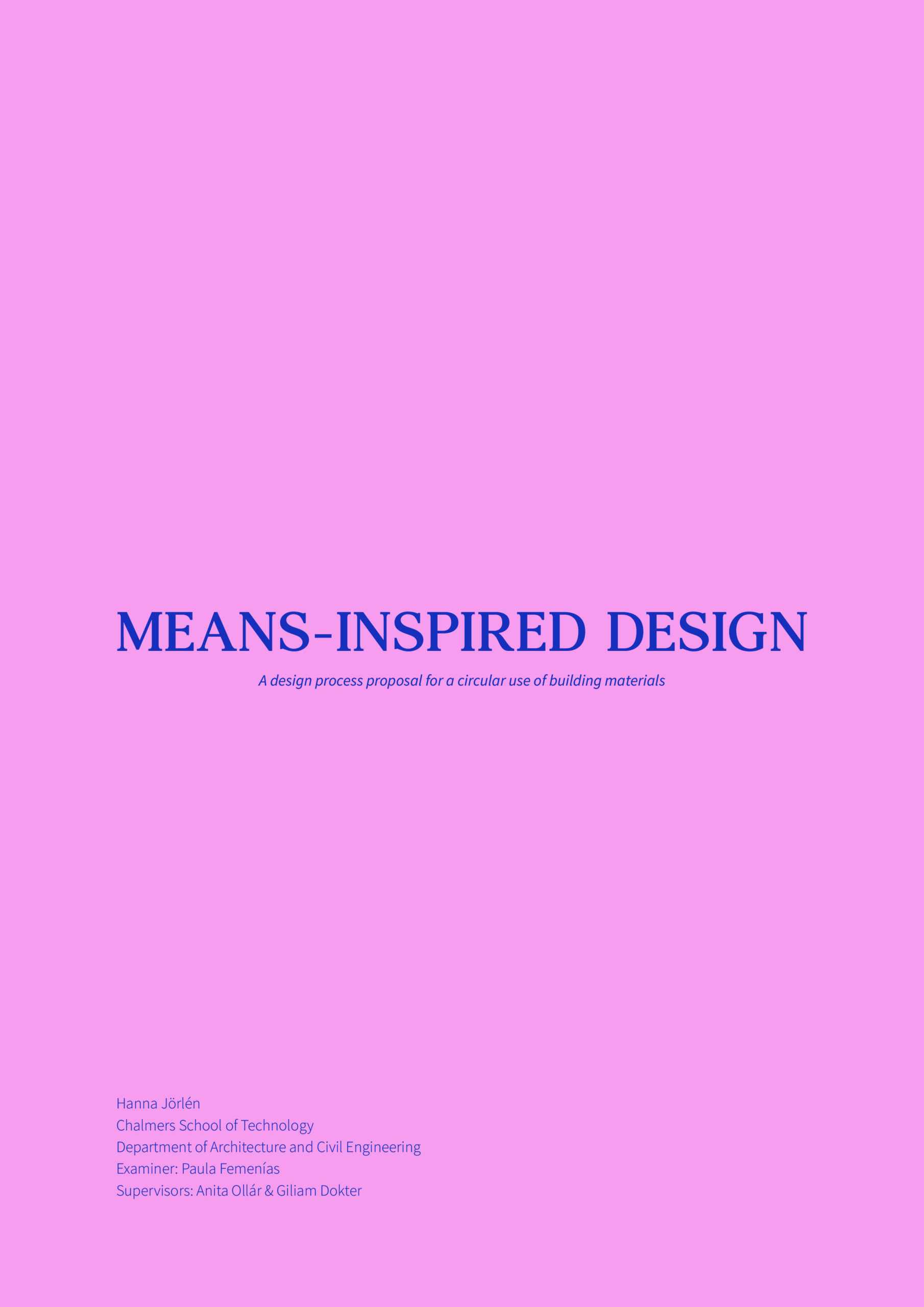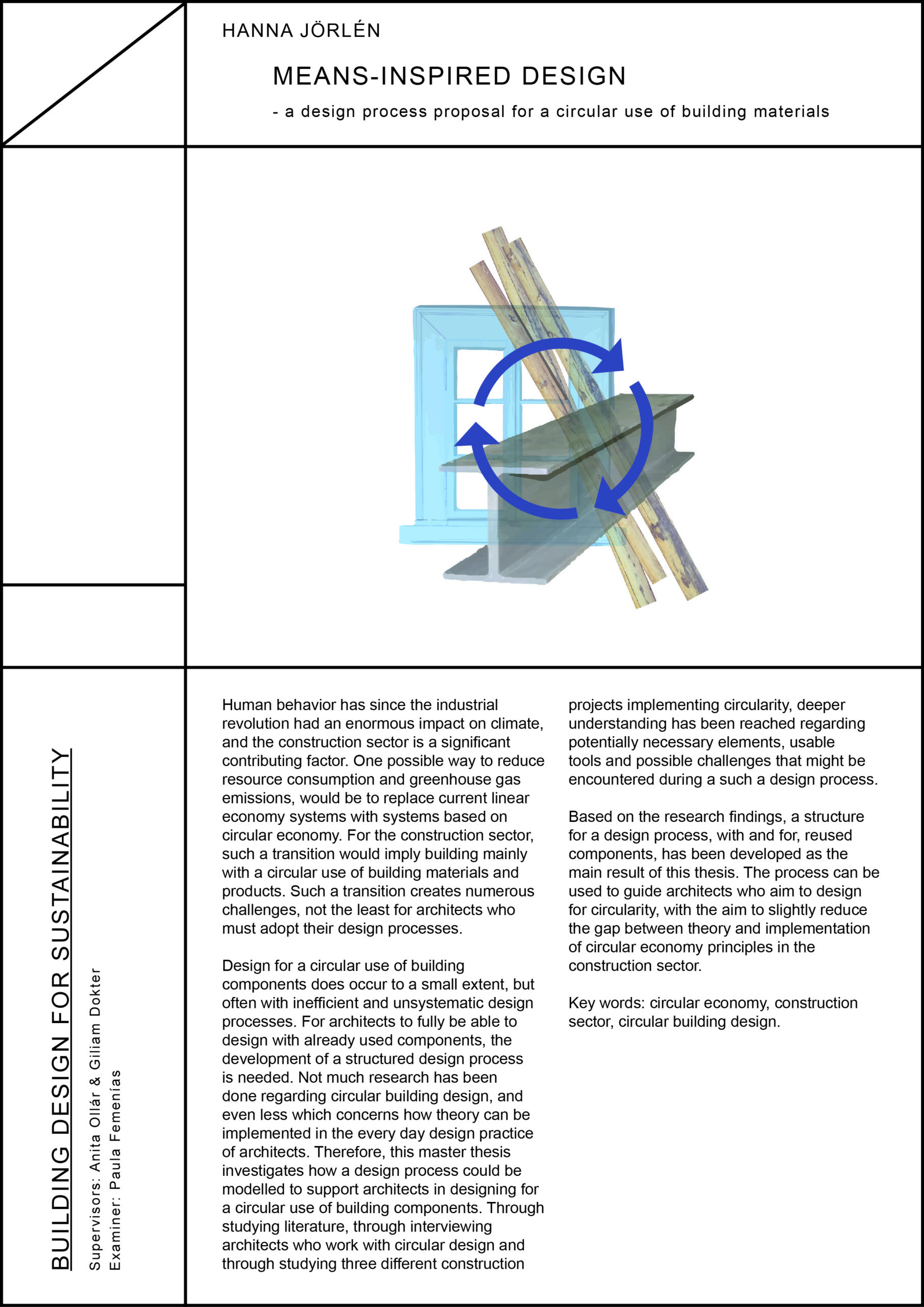Human impact on climate can no longer be denied, and the building industry has a large part in contributing to both increased emissions and exhaustion of natural resources. A shift in the building industry, from the current, linear economy system to a circular economy system could be one way to take greater responsibility for resource consumption and to respond to future sustainability challenges. That would include a transition to building with products and materials that have already been used, which poses a great challenge for architects, who have to adapt their design processes to design for a circular use of building materials.
Designing for a circular use of building materials and components has become a frequently discussed topic on a conceptual level, but what is less explored is how such a design process actually can be translated into practice. As of today, circular design does occur, to a small extent, but with design processes that often are unsystematic and inefficient. To enable a wider establishment, a more structured design process must be developed.
The purpose of this thesis is to increase knowledge on circular economy and how its principles can be adopted by the building industry to reach a more sustainable use of resources. The aim is to propose a structure for a design process that supports architects in designing for a circular use of building materials and products.
______________________________
BOOKLET
ABSTRACT
MEANS-INSPIRED DESIGN PROCESS PROPOSAL

PROCESS PROTOTYPE

